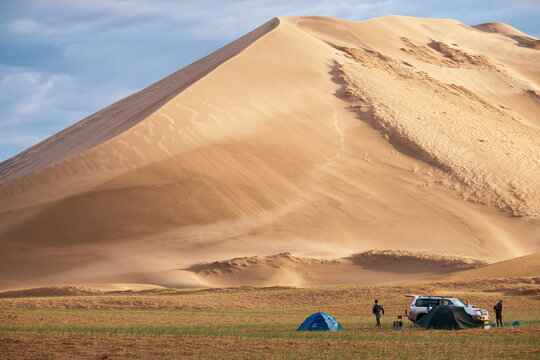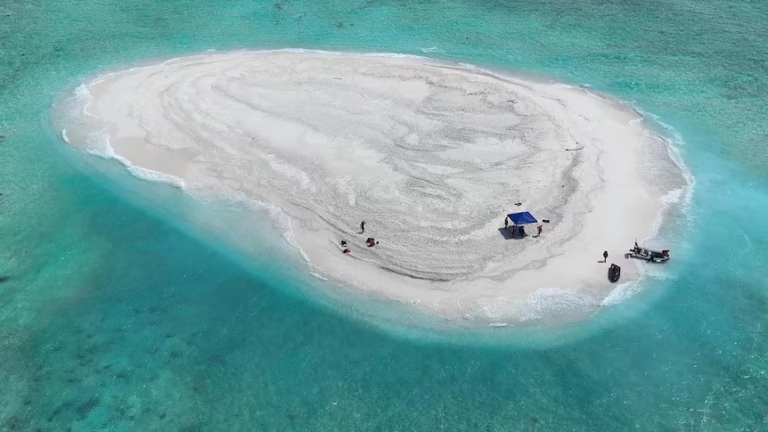The Ultimate Guide to Barkhan : Facts, Figures, and Insights
Introduction
Barkhan, a term that might not be familiar to everyone, holds significant importance in various contexts, including geography, ecology, and even cultural studies. This comprehensive guide aims to delve deep into the concept of Barkhan, providing you with factual information, figures, and insights that will not only educate but also optimize your understanding for SEO purposes. Whether you’re a student, researcher, or just a curious reader, this article will serve as your go-to resource for all things Barkhan.
What is Barkhan?
Definition and Origin
Barkhan, also spelled “barchan,” is a type of sand dune that is crescent-shaped. The term originates from the Turkic languages, particularly Kazakh, where it means “a small hill.” Barkhans are typically found in desert environments and are formed by the action of wind on loose sand.
Formation Process
Barkhans are formed through a process known as aeolian transport, where wind moves sand particles. The formation begins when wind blows sand across a flat surface. As the sand accumulates, it forms a mound. The wind continues to shape the mound into a crescent, with the horns pointing downwind. The windward side of the dune is gently sloping, while the leeward side is steeper.
Characteristics
- Shape: Crescent-shaped with horns pointing downwind.
- Size: Typically range from a few meters to several hundred meters in length.
- Movement: Barkhans are mobile and can move across the landscape at rates of up to 50 meters per year.
- Composition: Composed primarily of quartz sand, but can also include other minerals.
Geographical Distribution
Deserts with Barkhans
Barkhans are predominantly found in arid and semi-arid regions. Some of the most notable deserts where barkhans are prevalent include:
- Sahara Desert: The largest hot desert in the world, spanning across North Africa.
- Arabian Desert: Covering much of the Arabian Peninsula.
- Gobi Desert: Located in northern China and southern Mongolia.
- Karakum Desert: Situated in Central Asia, primarily in Turkmenistan.
Notable Barkhan Fields
- Kyzylkum Desert: Located in Central Asia, this desert is known for its extensive barkhan fields.
- Taklamakan Desert: Situated in China, this desert features some of the most dynamic barkhan formations.
- Namib Desert: Found in Namibia, this desert is home to some of the tallest barkhans in the world.
Ecological Significance
Habitat for Flora and Fauna
Despite their harsh conditions, barkhans provide a unique habitat for specialized flora and fauna. Some plants, like the psammophytes, have adapted to thrive in sandy environments. Animals such as the sand gazelle and various species of reptiles and insects have also adapted to life in and around barkhans.
Soil Stabilization
Barkhans play a crucial role in soil stabilization. The vegetation that grows on and around barkhans helps to anchor the sand, preventing erosion and desertification. This is particularly important in regions where desertification is a significant environmental concern.
Climate Regulation
Barkhans also contribute to climate regulation. The sand reflects sunlight, helping to cool the surrounding area. Additionally, the movement of barkhans can influence local wind patterns, which in turn can affect weather conditions.
Cultural and Historical Significance
Indigenous Knowledge
Indigenous peoples living in desert regions have a deep understanding of barkhans and their behavior. This knowledge has been passed down through generations and is often used in navigation, resource management, and even in predicting weather patterns.
Historical Trade Routes
Barkhans have played a significant role in the history of trade routes. The Silk Road, for example, traversed several deserts with extensive barkhan fields. Understanding the movement and behavior of barkhans was crucial for traders to navigate these challenging landscapes.
Mythology and Folklore
In various cultures, barkhans have been the subject of myths and folklore. They are often depicted as living entities, capable of moving and even consuming entire villages. These stories reflect the awe and respect that people have for these natural formations.
Scientific Studies and Research
Geological Studies
Barkhans are a subject of interest in geological studies. Researchers study their formation, movement, and composition to gain insights into aeolian processes and desertification. Understanding barkhans can also provide valuable information about past climatic conditions.
Ecological Research
Ecologists study the flora and fauna that inhabit barkhans to understand how life adapts to extreme environments. This research can have implications for conservation efforts and for understanding the impacts of climate change on desert ecosystems.
Remote Sensing and GIS
Advancements in remote sensing and Geographic Information Systems (GIS) have revolutionized the study of barkhans. Satellite imagery and drone technology allow researchers to monitor barkhan movement and changes in real-time, providing valuable data for environmental management and disaster preparedness.
Economic Importance
Tourism
Barkhans are a significant attraction for tourists, particularly in regions like the Sahara and the Arabian Desert. Activities such as dune bashing, sandboarding, and camel treks are popular among visitors, contributing to local economies.
Resource Extraction
In some regions, barkhans are a source of valuable minerals. For example, the extraction of silica sand from barkhans is an important industry in certain areas. However, this must be done sustainably to avoid environmental degradation.
Agriculture
In some cases, barkhans can be stabilized and used for agriculture. Techniques such as sand dune stabilization and the use of drought-resistant crops can turn these seemingly barren landscapes into productive farmland.
Environmental Challenges
Desertification
Desertification is a significant environmental challenge associated with barkhans. Human activities such as overgrazing, deforestation, and unsustainable agricultural practices can accelerate the movement of barkhans, leading to the loss of arable land and biodiversity.
Climate Change
Climate change poses a threat to barkhans and the ecosystems they support. Changes in precipitation patterns and increased temperatures can alter the dynamics of barkhan formation and movement, with potentially devastating effects on local communities and ecosystems.
Human Impact
Human activities such as urbanization, mining, and tourism can have a negative impact on barkhans. It is essential to balance economic development with environmental conservation to ensure the sustainability of these unique landscapes.
Conservation Efforts
Protected Areas
Several regions with significant barkhan fields have been designated as protected areas. These include national parks, wildlife reserves, and UNESCO World Heritage Sites. These protected areas help to conserve the unique flora and fauna that inhabit barkhans and prevent further environmental degradation.
Sustainable Practices
Promoting sustainable practices is crucial for the conservation of barkhans. This includes sustainable tourism, responsible resource extraction, and the implementation of agricultural techniques that minimize environmental impact.
Community Involvement
Engaging local communities in conservation efforts is essential. Indigenous knowledge and practices can provide valuable insights into sustainable management of barkhans. Additionally, involving communities in conservation projects can help to ensure their long-term success.
Conclusion
Barkhans are more than just picturesque sand dunes; they are dynamic, ecologically significant, and culturally important formations that play a crucial role in the environments where they are found. Understanding barkhans through the lens of science, culture, and economics provides a comprehensive view of their importance and the challenges they face. As we continue to study and interact with these fascinating landscapes, it is imperative that we do so with a sense of responsibility and sustainability to ensure their preservation for future generations.
References
- National Geographic. “The Science of Sand Dunes.” https://www.nationalgeographic.com
- UNESCO. “World Heritage Sites: Deserts and Sand Dunes.” https://whc.unesco.org
- Smithsonian Magazine. “The Moving Sands of the Sahara.” https://www.smithsonianmag.com
- Journal of Arid Environments. “Ecological Adaptations in Desert Flora and Fauna.” https://www.journals.elsevier.com
- Geological Society of America. “Aeolian Processes and Desert Landforms.” https://www.geosociety.org






